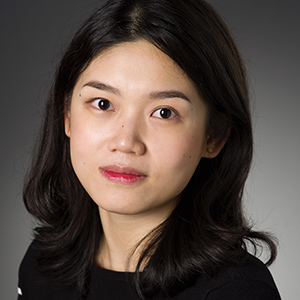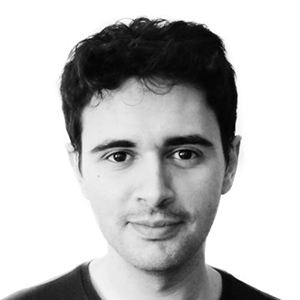A large number of fellows develop and apply mathematical, statistical and machine learning tools to understand and predict optimal personalized treatments for cancer patients, to detect genes underlying mental disorders, and enable accurate prediction of antigen-antibody binding – a prerequisite for vaccine and antibody design, to mention a few. Please read more below.
Weiqiu Cheng

Country of origin: China
Host: Ole Andreassen
Group: NORMENT - Centre of Excellence
Thematic area: Biostatistics
Project title: Applying machine learning tools to reveal the molecular genetic underpinnings of psychiatric disorders
My project
Psychiatric disorders are known as a significant public health problem. Although recent GWAS studies have identified several risk genes. However, the disorders are polygenic(determined by polygenes), with numerous small genetic effects which are difficult to capture with current sample size and traditional methods.(PBS).
Here we aim to identify the genetic basis of psychiatric disorders using an integrated approach building on Norwegian biobank and registry samples, GWAS data, large hospital samples and our novel biostatistical methods. The analytical tools can quantify polygenic overlap and detect weak genetic effects, and identify the polygenic architecture and discover specific shared gene loci.
Pravesh Parekh

Country of origin: India
Host: Ole Andreassen
Group: Precision Psychiatry, NORMENT: Norwegian Centre for Mental Disorders Research
Thematic area: Statistical genetics, precision medicine, prediction/stratification, brain imaging
Project title: A longitudinal imaging-genomics framework for predicting clinical outcomes in neuropsychiatric conditions
My project
The human brain undergoes significant structural and functional changes during adolescence. This is also the time when most psychiatric illnesses begin to manifest. It is hypothesized that an interplay between genetic susceptibility and environmental factors can cause deviations in the normal brain developmental trajectories leading to the development of psychiatric disorders. In this study, we will uncover the genetic architecture that drives the structural and functional maturation of the brain and link these to psychiatric disorders. Then, using genetics, neuroimaging, cognitive, and socio-demographic information, we will develop predictive models for clinically relevant outcomes such as treatment response in psychiatric disorders.
This study will reveal new knowledge about the genetic factors that shape brain maturation and help identify risk factors for psychiatric illnesses. The predictive models, on successful validation, can advance precision psychiatry and lead to clinically useful translations.
Annika Krutto

Country of origin: Estonia
Host: Prof Magne Thoresen
Group: Department of Biostatistics
Thematic area: Biostatistics and Biomathematics
Project title: Advancing Frontiers in the Use of Graphical Models for High-Dimensional Biomedical Data
My project
The sustainable development of medical and information technologies has enabled a large number of relational data on individual's diseases, medicaments, genes, proteins, chemical compounds, environmental features, etc. Having access to such large-scale data attracts the attention to promising issues such as preventive medicine and personalized healthcare. Our research objective is to provide innovative approaches for discovering knowledge in biobanks (at the molecular dynamic and genetic levels) via exploiting the state of art methods of graphical models.
Annikka Polster

Country of origin: Germany
Host: Marieke Kuijjer
Group: NCMM, Kuijjerlab
Thematic area: Network medicine
Project title: Patient-specific modelling of gene regulatory networks and association to clinical characteristics in Alzheimer's Disease
My project
Alzheimer's Disease (AD) leads to increasing problems with memory, thinking and behavior and, ultimately, death. It has become clear that it is necessary to personalize treatment. Thus it is important to understand what causes differences in symptoms and individual disease progression between patients. Gene regulatory networks are complex mechanisms that steer cellular function and likely malfunction in AD, but it is unclear how.
This project aims to analyze and compare gene regulatory networks in AD patients and healthy people. I will model disease-specific networks features and relate them to different disease characteristics to identify new personalized treatment strategies in AD.
Daniel Osorio

Country of origin: Colombia
Hosts: Marieke Kuijjer
Group: Kuijjer Group
Thematic area: Computational Biology
Project title: Towards identifying regulatory mechanisms driving breast cancer phenotypes by integrating multi-omic and multimodal single-cell data in a network-based approach.
My project
Towards identifying regulatory mechanisms driving breast cancer phenotypes by integrating multi-omic and multimodal single-cell data in a network-based approach.
c. My research focuses on developing tools to correctly modeling and detecting alterations in gene regulation driving diseases like breast cancer. I do this by integrating different kinds of single-cell data types (multi-omic and multimodal) using network-based approaches. My goal is to solve very foundational questions such as: What are the cell-type-specific changes in the regulatory architecture associated with breast cancer development? What is the cell type exhibiting the most severe changes in its regulatory architecture during breast cancer development? What are the most consistent changes in the regulatory architecture across cell types associated with breast cancer development?
Answering these questions may help define therapeutic targets that in synchrony lead to breast cancer development. The identified targets may be subject to further testing, modeling, and cross-validation to delineate their role in a possible breast cancer treatment.
Fatih Kizilaslan

Country of origin: Turkey
Host: Valeria Vitelli
Group: Statistical models for high-dimensional and functional data
Thematic area: Biostatistics
Project title: Importance of the mixture cure rate frailty models for cancer patients
My project
Classical survival analysis models consider the study population as homogeneous. However, patients under study have different features and unique properties in terms of their disease conditions. Some of them can be cured during the treatment period, and some others cannot. Some cured patients can also encounter recurrence in this period, while others don’t. Therefore, using mixture cure model consists of cured and uncured subjects with taking into consideration of the unobserved heterogeneity due to unobserved covariates which is called frailty creates more realistic model.
We aim to develop new mixture cure frailty models under some parametric assumptions for the uncured individuals and frailty using both clinical and omics data.
Different models will be constructed for the different type of survival data.
The developed new models that has both frailty and mixture components help scientist to do better cure rate predictions for cancer patients.
Combination of both clinical and omics data for this type of models will contribute a new perspective of the literature.
Fekadu L. Bayisa

Country of origin: Ethiopia
Host: Manuela Zucknick
Group: Oslo Centre for Biostatistics and Epidemiology (OCBE)
Thematic area: Biostatistics
Project title: Statistical learning for personalized cancer therapy modelling and prediction in pharmacogenomic cell line screens
My project
A major challenge in cancer therapy is the development of drug resistance by cancer cells, which they can achieve through mutation of genes in the targeted signalling pathways. Using drug combinations which target several multiple signalling pathways is one possible way to reduce drug resistance. Because drugs given in combination can work together to fight the tumour, this can even increase efficacy and decrease adverse side effects for patients. However, it is experimentally costly and time-consuming to screen all possible drug pairs to find effective treatments, because the number of possible drug combinations grows rapidly even for a few numbers of drugs. Thus, for the implementation of personalized cancer therapies the development of novel methods for predicting synergistic drug responses is needed.
This project is aimed at developing statistical learning methods, which will integrate multiple heterogeneous data sources and predict synergistic drug combinations to improve the treatment of cancer patients.
Mathijs Janssen

Country of origin: the Netherlands
Host: dr. Andreas Carlson
Group: Department of Mathematics, Mechanics Division
Thematic area: Computational biophysics/mechanics
Project title: ESCRT-induced formation of intraluminal vesicles
My project
The endosome, a membrane-bound compartment inside the cell, encapsulates cargo in nanometer-sized intraluminal vesicles (ILVs). Despite the essential role ILVs play in cell communication, with irregularities linked to diseases such as cancer, mechanistic models describing ILV formation are scarce and have overlooked essential physical mechanisms identified in recent experiments. We will develop a theoretical model of ILV formation that accounts for the coupled effects of adsorption/desorption of proteins on the endosomal membrane, elastic membrane deformations, and fluid flow.
Irregularities in intraluminal vesicle formation have been linked to different diseases, including some forms of cancer. A better theoretical understanding of such irregularities may pave way for the development of better treatments.
Maurício Moreira Soares

Country of origin: Brazil
Host: Arnoldo Frigessi and Eivind Hovig
Group: Oslo Centre for Biostatistics and Epidemiology (OCBE) and Center for Bioinformatics
Thematic area: Artificial intelligence, Medicine
Project title: Big data and artificial intelligence for early detection and personalized treatment in head and neck cancer
My project
Head and neck cancer (HNC) involves aggressive tumors which are challenging to treat due to their high variability among individuals: a successful strategy employed for one patient may not work for others. Treatment may be extremely invasive and its impact on quality of life (QoL) can be devastating. We will analyse a unique data set of more than 10,000 HNC patients, including clinical, biomolecular, and QoL layers, as part of an international collaborative project on HNC, managing possibly the world’s largest cohorts of HNC patients.
We will apply machine learning methods on this existing but unexploited data set, with focus on the efficacy of treatment, prediction of clinical outcomes and prediction of deteriorations of QoL. Our effort is towards improving QoL and survival of HNC patients by delivering statistical models for personalized treatments.
Paula Istvan

Country of origin: Romania
Host: Trine B. Rounge og Torbjørn Rognes
Group: Centre for Bioinformatics, University of Oslo and Cancer Registry of Norway
Thematic area: Covid-19/SARS-Cov-2, Microbiome (Virome), Resistome and Cancer
Project title: BEffects of pandemic protective of Covid-19/SARS-Cov-2 measures on the human gut microbiome and resistome
My project
The gut microbiota is key for several metabolic and immunological process, while it is also relevant for the gut homeostasis and for antimicrobial resistance (AMR) and antibiotic resistance genes (ARG), the so called resistome. This project aims to study the effect of the extra hygienic measures adopted during this current pandemic scenario on the gut microbiota of humans and the impacts to cancer-screening participants using sequence-based approaches, in association with de novo assembly and functional annotation.
The project website will communicate the main results to users and the research community. and any software tool developed will be shared on Github.
Puneet Rawat

Country of origin: India
Host: Dr. Victor Greiff
Group: Computational and Systems Immunology (Greifflab)
Thematic area: Computational Immunology
Project title: Unravelling the key to antibody-antigen interactions using artificial intelligence.
My project
Antibodies are part of the immune system that identify and neutralize foreign objects such as pathogenic bacteria and viruses. They are also a part of the immune response generated by vaccines. Due to their high specificity towards antigen, they are also considered promising protein-based therapeutic candidates. Currently, there are 79 antibodies approved by the United States Food and Drug Administration (FDA ) for various diseases and hundreds are in clinical trials. However, the antibody research is limited due to high experimental cost and time consuming experiments. Many antibodies also face developability hurdles. Our lab aims to understand the biological phenomena of antigen-antibody interaction and incorporate machine learning/deep learning methods for their real world application.
We aim to revolutionize the health technology field by developing robust machine learning/deep learning methods on large scale data for computer-based screening of antibodies, vaccine development and early detection of developability issues. It can significantly reduce the cost and time to develop new antibody-based therapeutics/vaccines.
Sakshi Singh

Country of origin: India
Host: Prof. Anne Simonsen
Group: Simonsen´s lab
Thematic area: Bioinformatics in Autophagy
Project title: Lipid Binding proteins in autophagy; molecular mechanisms and links to disease (AUTOLIPID)
My project
Living organisms are able to eat parts of themselves in order to survive. This involves activation of a process called macroautophagy (hereafter autophagy), which facilitates degradation of cellular components to provide breakdown products needed to support metabolism, as well as removal of deleterious components (e.g. damaged organelles and microbial invaders).
Autophagy is crucial for the normal development of cells and organs, but defects in autophagy have also been linked to various diseases, such as Cancer, neurodegeneration, Crohn’s disease, liver diseases and metabolic syndrome. Characterization of molecular mechanisms of autophagy can provide insight that will pave the way for the development of specific autophagy-modulating drugs, which could effectively treat or even cure many devastating diseases.
Our understanding of the hierarchy of autophagy-related proteins have increased significantly, however very little is known about the lipids involved, their interaction with the autophagic protein machinery and how these are regulated under various metabolic conditions and in disease.
In the current project I will use various bioinformatic tools in combination with molecular cell biology and biochemistry to characterize candidates identified in these screens with an aim to reveal novel interactions between lipids and proteins in autophagy and understand their regulation and importance in health and disease.
Silvio Armando Conedera

Country of origin: Honduras
Host: Vessela Kristensen
Group: Cancer Genome Variation, Department of Medical Genetics, Institute of Clinical Medicine
Thematic area: Genetics, bioinformatics, genome structure and variation
Project title: Clinical Pharmacogenomics in Cancer – Variant Discovery and Automation of Clinical Genetic Variant Interpretation
My project
Breast Cancer is the most common type of cancer present in females and accounted for 685,000 deaths in 2020 alone. It is a complex disease characterized by the interaction of numerous somatically acquired genetic and epigenetic lesions, noticeably influenced by the underlying germline genetic polymorphisms that are often present. With such a marked genetic influence, many cancer patients have had their genetic material sequenced to aid in establishing molecular diagnoses, which in turn produces large databases with underutilized genomic information. By analyzing these datasets and identifying pharmacogenomic associations in these variants, this information may be used to identify candidates for tailored, appropriate pharmacologic therapy, implementing another level of personalized medicine with clinically actionable results. Identifying patients carrying variants associated with varying response to treatment drugs may reduce less-effective treatments or overtreatment in patients with different types of cancers. Thus, limiting long-term side effects such as chronic fatigue, cognitive problems, heart failure and leukemia, among others.
The results from my project will generate new knowledge needed for providing cancer patients personalized diagnosis and treatment options. This may prevent overtreatment and unnecessary side effects associated with less effective treatment regimens. As such, it could not only provide physical health benefits, but also reduce the psychological and socioeconomic impacts of the disease. It will also enable physicians to utilize this information in real time, in the clinical setting, during the period when treatment options are discussed.
Theophilus Quachie Asenso

Country of origin: Ghana
Host: Manuela Zucknick
Group: Oslo Centre for Biostatistics and Epidemiology (OCBE)
Thematic area: Biostatistics
Project title: Statistical learning for personalised cancer therapy: modelling and prediction of drug synergy in pharmacogenomic screens
My project
Cancers are very heterogeneous with different molecular causes and pathways being involved. In recent years, some targeted therapies have been developed, which act on a specific gene or protein, but they are only available for a minority of patients and for most tumours the targets remain unknown. Also, the effectiveness of cancer targeted therapies is short-lived and tumours develop resistance that might only be overcome by using drug combinations which target several multiple signalling pathways. Because such synergies often depend on the biological interaction of several molecular pathways, this is an example, where we expect statistical interaction effects to be very important.
We aim to explore and develop statistical methods which will integrate main and interaction effects for discovering combinations of drugs that work particularly well together, i.e. are synergistic. For prediction we use the tumour’s molecular characterisation, for example from DNA sequencing to identify mutations, together with information about the drugs and available experimental data.
Cancer researchers and oncologist would use our model to identify the best possible drug combination for each individual patient, based on drug response data from large screens, combined with information about the molecular characteristics of a patient's tumour.
Timo Koch

Country of origin: Germany
Host: Kent-Andre Mardal
Group: Mechanics group, Department of Mathematics
Thematic area: Computational bio-physics/mechanics
Project title: Advanced in-silico transport models for vascularized tissues with focus on the brain
My project
Project description: In my project, we develop and use computer models to advance the understanding of passive transport processes in tissue, that is, transport of substances in the blood stream, in the space between cells (interstitium) and across the capillary walls. In the proposed simulation framework, we explicitly resolve the microvascular network structure. We develop novel algorithms to enable the simultaneous simulation of blood flow and interstitial fluid flow. In combination with magnetic resonance (MR) simulations, (MR imaging being an essential imaging technique in the clinical workup of diseases of the brain,) we want to understand the effects of vascular structure and variability on the MR signal.
Understanding microvascular transport patterns is essential in the understanding of many aspects of brain function, therapy and imaging, such as waste removal mechanisms in the brain, targeted drug delivery, or the interpretation of MRI studies involving a contrast agent. Specifically, the simulation tools developed in this project might allow to infer physical and functional parameters from MRI data that are currently unavailable to clinicians.
Vandana Ravindran

Country of origin: India
Host: Prof Arnoldo Frigessi and Prof Tero Aittokallio
Group: Department of Biostatistics and Department of cancer genetics
Thematic area: Computational biology
Project title: Network approach to understand the etiology of complex diseases
My project
Cancer and other complex diseases cause yearly millions of deaths worldwide. Viruses are involved in the pathogenesis of many of the diseases including cancers. Interestingly, viruses grow easily in cancer cells making cancer patients vulnerable to infection. Thus, whether it is cancer or infection, the immune system becomes compromised. Different types of cancers require targeted treatment strategies to prevent the patient from a viral infection.
This project aims to address the relationship between selected cancers and viral infections, and design treatment strategies specific to that cancer type using complex network approches.